Table of Contents
Introduction to Korean Cucumber Salad
If you're searching for an authentic Korean cucumber salad recipe with precise measurements and clear instructions, you've found the perfect guide. This refreshing dish combines crisp cucumbers with a bold, spicy-sweet-tangy dressing for a quick and flavorful side that elevates any meal. Follow these exact steps to achieve restaurant-quality results at home.
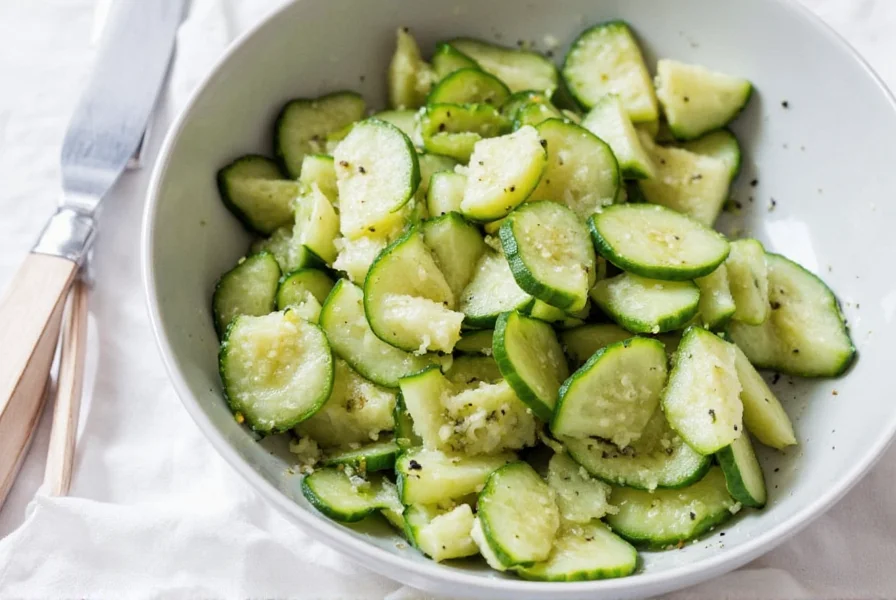
Originating from Korea, this salad is a staple in households and restaurants worldwide due to its simplicity and versatility. The key to its perfect balance lies in precise ingredient measurements, which we'll detail below. Whether you're a beginner or experienced cook, this recipe delivers consistent results every time.
Essential Ingredients for a Perfect Korean Cucumber Salad
For authentic results, use these exact measurements:
- 2 medium cucumbers (500g): English or Persian varieties work best for crisp texture
- 2 tablespoons gochujang: Fermented red pepper paste for authentic depth
- 1 tablespoon soy sauce: Adds umami and saltiness
- 1 tablespoon rice vinegar: Balances heat with brightness
- 1 teaspoon sesame oil: Provides nutty aroma
- 1 teaspoon sugar: Counters spiciness
- 1 clove garlic, minced: Fresh for maximum flavor
- 2 green onions, chopped: For fresh finish
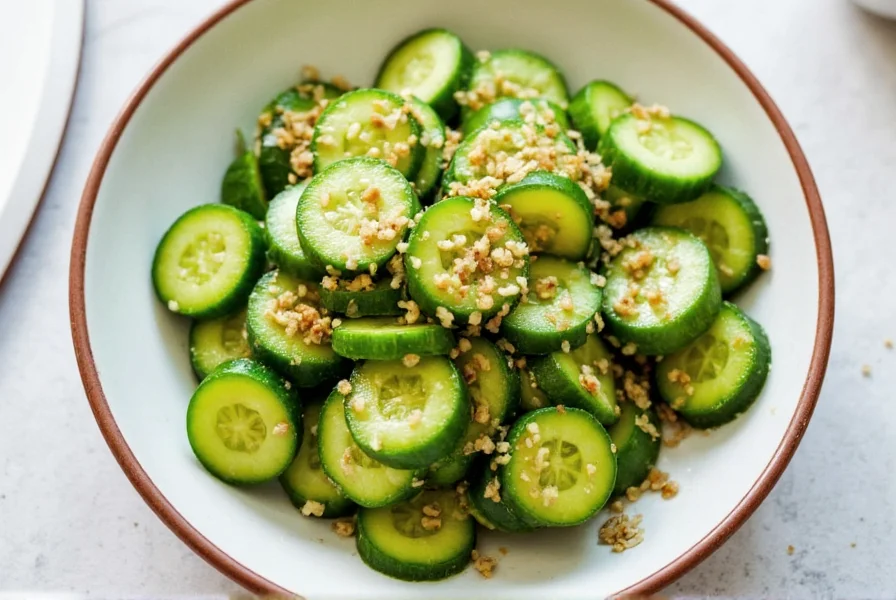
Step-by-Step Guide to Making Korean Cucumber Salad
Follow these exact measurements and steps for perfect results:
Step 1: Prepare the Cucumbers
Wash cucumbers thoroughly. Slice into 1/8-inch thick rounds or half-moons. Leave skin on for extra texture and nutrients. If using regular cucumbers, remove seeds for best texture.
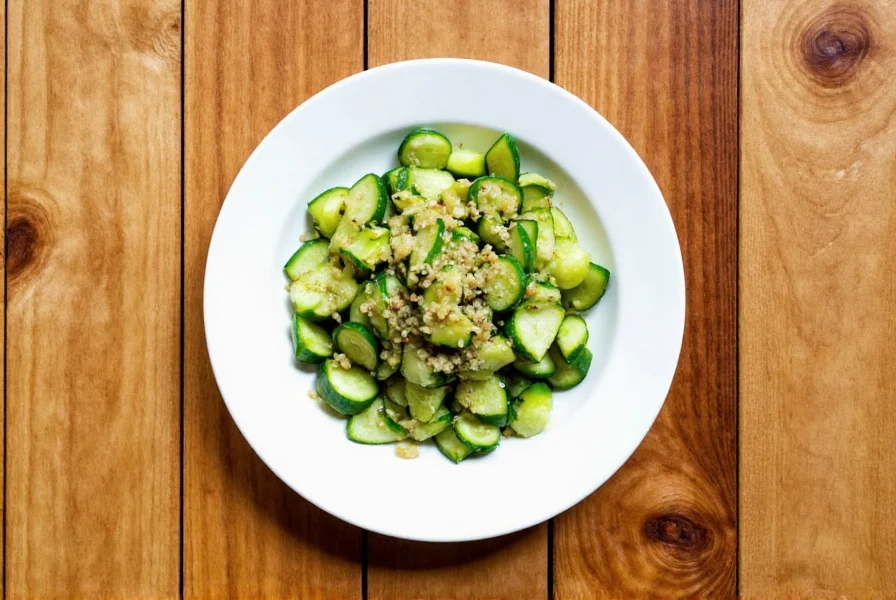
Step 2: Make the Dressing
In a small bowl, combine 2 tablespoons gochujang, 1 tablespoon soy sauce, 1 tablespoon rice vinegar, 1 teaspoon sesame oil, 1 minced garlic clove, and 1 teaspoon sugar. Mix until smooth and fully blended.
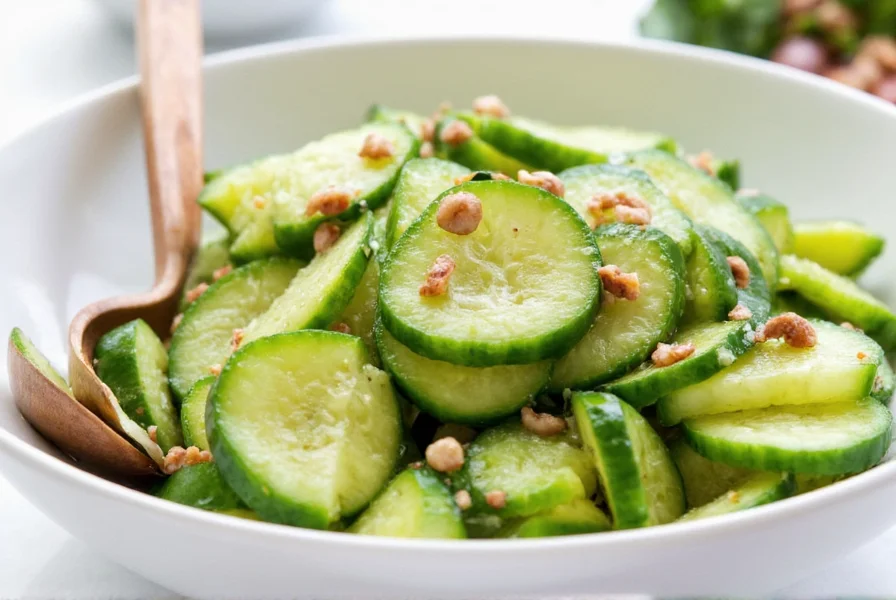
Step 3: Toss the Cucumbers
Add sliced cucumbers to the dressing bowl. Gently toss until evenly coated. Let sit for 10-15 minutes to allow flavors to penetrate.
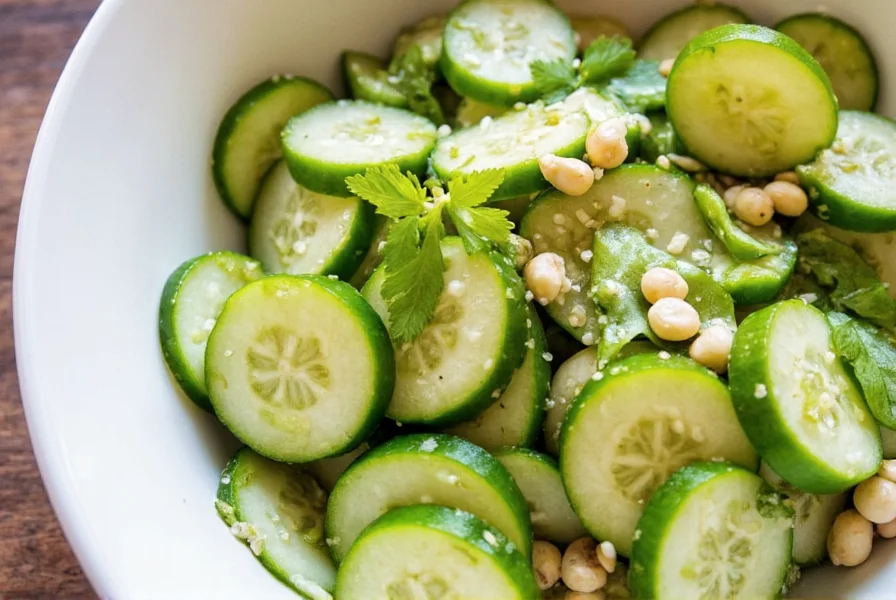
Step 4: Add Final Touches
Stir in chopped green onions. For extra flavor, add a pinch of black pepper or 1/2 teaspoon toasted sesame seeds. Taste and adjust seasoning if needed.
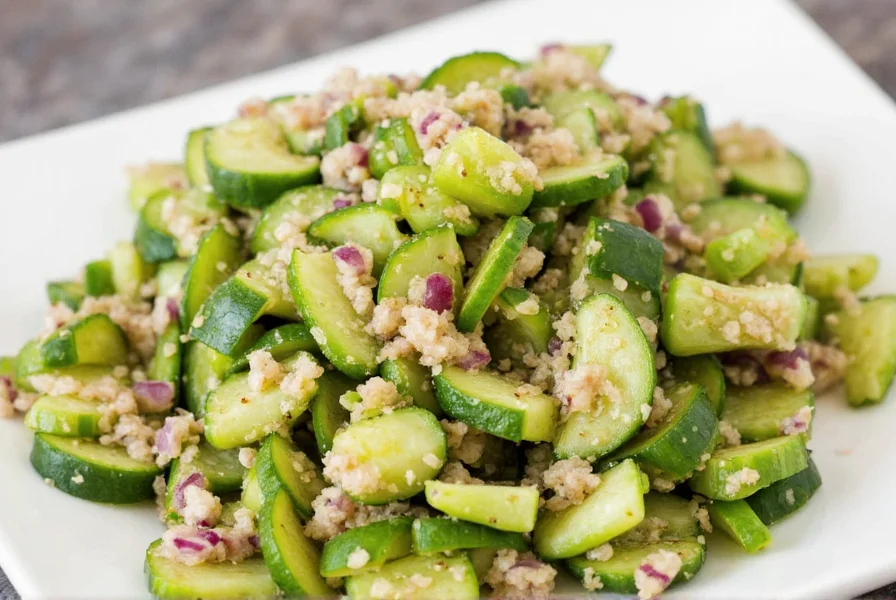
Step 5: Serve and Enjoy
Chill for 5 minutes before serving for optimal crispness. This salad pairs perfectly with grilled meats, rice bowls, or as a standalone refreshing snack.
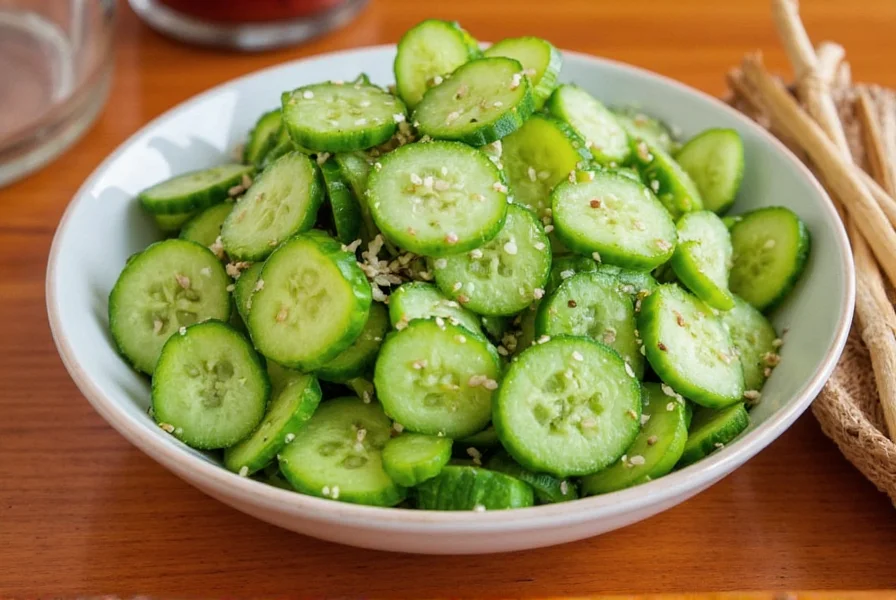
Pro Tips for the Best Results
- Use exact measurements: Precise ratios of gochujang, vinegar, and sugar create perfect balance
- Chill before serving: Refrigerate for 10 minutes to enhance crispness and flavor melding
- Adjust heat gradually: Start with 1.5 tbsp gochujang if sensitive to spice, then add more
- Don't over-salt: Soy sauce varies in sodium content - taste before adding extra salt
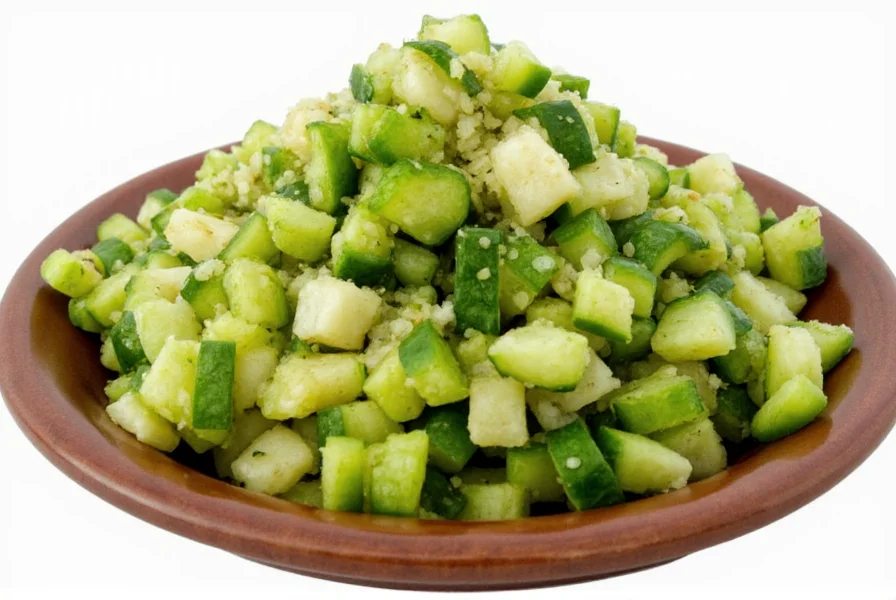
Frequently Asked Questions
How long does Korean cucumber salad keep in the refrigerator?
For best texture, consume within 24 hours. Store in an airtight container in the refrigerator. The cucumbers will soften after 2 days, but the flavor remains delicious.
Can I make this salad less spicy?
Yes! Reduce gochujang to 1 tablespoon and increase sugar to 1.5 teaspoons. For mild versions, replace half the gochujang with 1 teaspoon miso paste for umami without heat.
What type of cucumbers work best for this salad?
English or Persian cucumbers are ideal with their thin skin and minimal seeds. If using regular cucumbers, peel and remove seeds for best texture. Aim for 500g total weight for perfect portioning.
Can I prepare Korean cucumber salad ahead of time?
Prepare dressing up to 3 days in advance. Keep cucumbers separate until 1 hour before serving. For meal prep, store dressing and cucumbers in separate containers to maintain crispness.
What are good serving suggestions for Korean cucumber salad?
Perfect as a side for grilled meats (bulgogi, galbi), rice bowls, or bibimbap. Also delicious as a topping for tacos, sandwiches, or alongside kimchi jjigae. Serve chilled for maximum refreshment.
Can I substitute any ingredients if I can't find Korean-specific items?
For gochujang, mix 1 tbsp red pepper flakes + 1 tsp tomato paste + 1/2 tsp sugar (though flavor won't be identical). Rice vinegar can be replaced with apple cider vinegar. Sesame oil is irreplaceable for authentic taste but can be omitted if necessary.
Buying Guide for Essential Spices and Ingredients
For authentic results, choose quality ingredients with these exact specifications:
| Brand | Features | Best For |
|---|---|---|
| Chunjang | Naturally fermented, rich flavor | Home cooks looking for authenticity |
| Seoul Garden | Smooth texture, balanced heat | Those who prefer milder versions |
| Jinju | Traditional recipe, slightly sweet | For those who love a hint of sweetness |
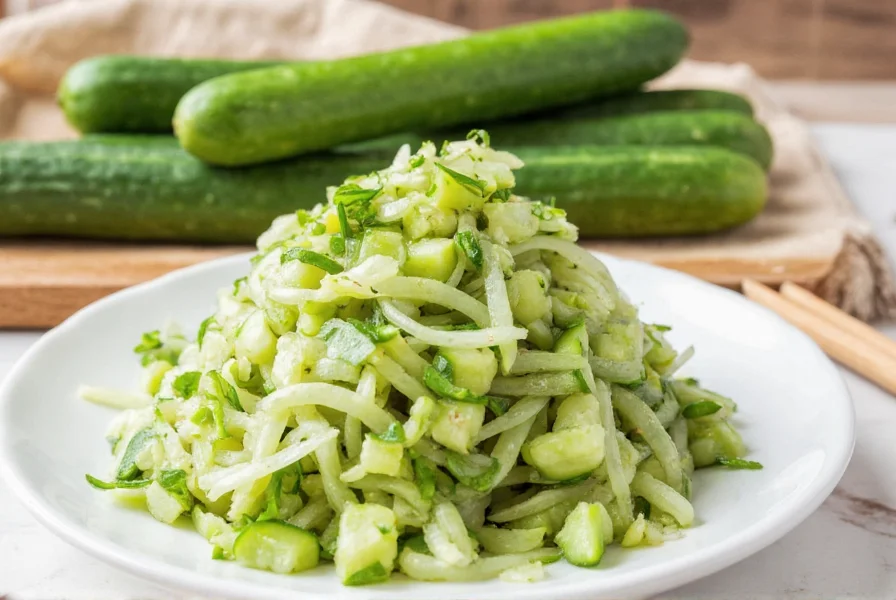
Rice Vinegar
Choose unseasoned, organic rice vinegar for pure flavor. Avoid "seasoned" varieties which contain added sugar and salt.
Sesame Oil
Use cold-pressed toasted sesame oil for maximum aroma. Store in a cool, dark place to preserve freshness.
Soy Sauce
Low-sodium soy sauce works best for controlling salt levels. Tamari is an excellent gluten-free alternative.
Garlic
Always use fresh garlic cloves. Pre-minced garlic lacks flavor intensity and contains preservatives.
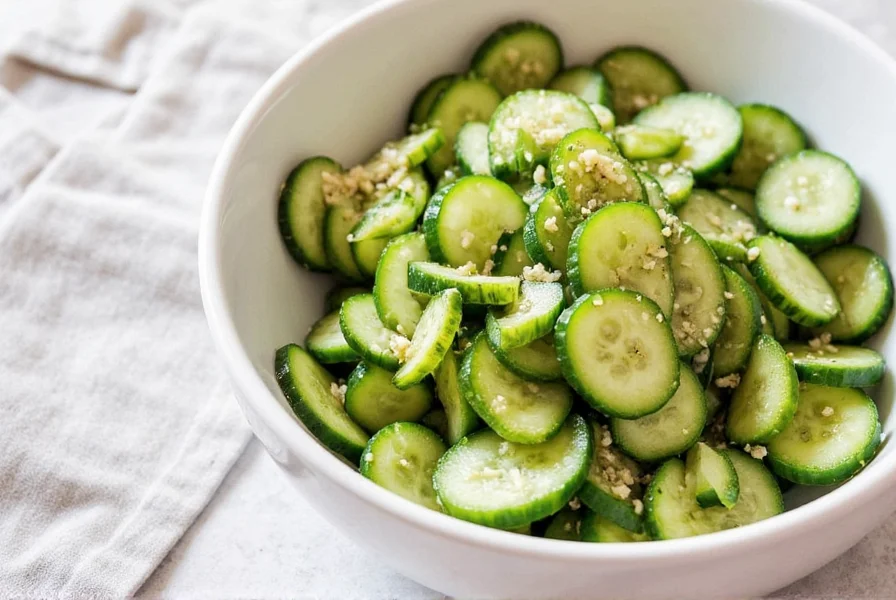
Conclusion
This Korean cucumber salad recipe delivers authentic flavor through precise measurements and expert techniques. By following the exact ingredient ratios and preparation steps outlined above, you'll achieve perfect spicy-sweet-tangy balance every time.
The key to success lies in using fresh ingredients with accurate measurements, especially the gochujang-to-vinegar ratio. Remember to chill before serving for maximum crispness and flavor development.
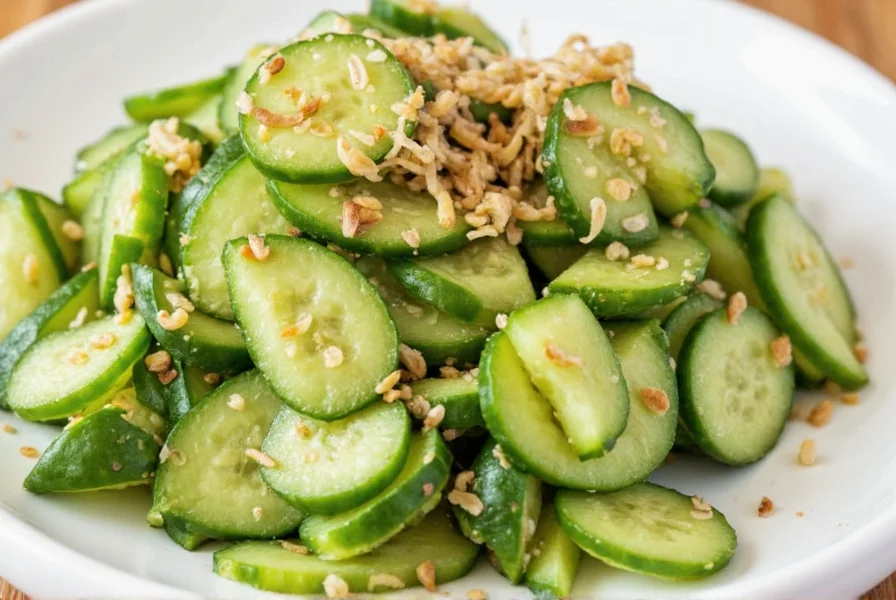
With this exact recipe, you can confidently recreate this Korean staple at home. Whether serving as a side dish or standalone snack, your taste buds will appreciate the perfect balance of flavors achieved through precise preparation.

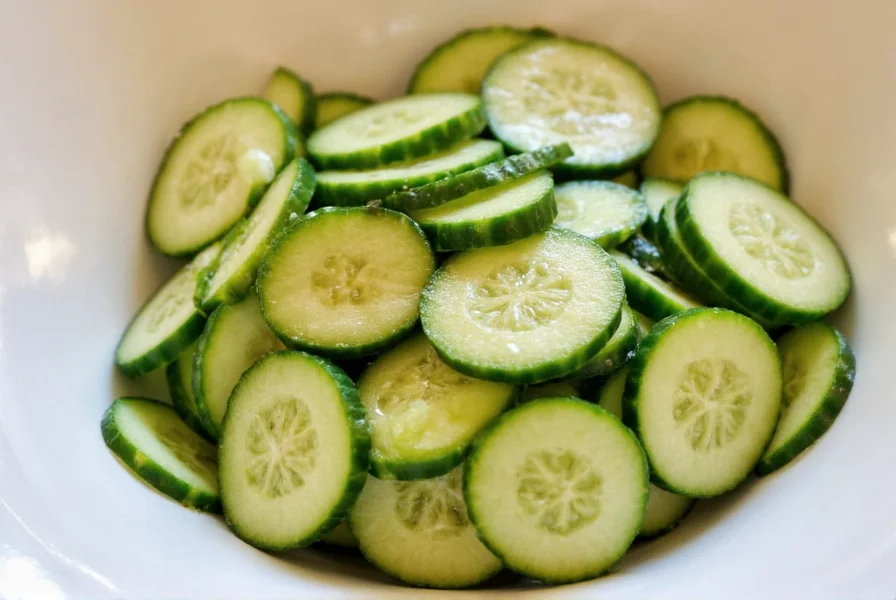









 浙公网安备
33010002000092号
浙公网安备
33010002000092号 浙B2-20120091-4
浙B2-20120091-4